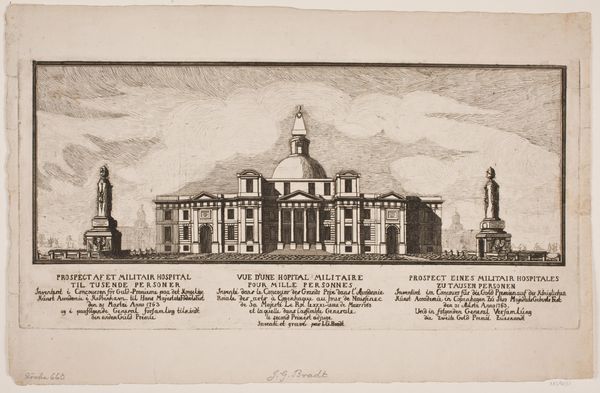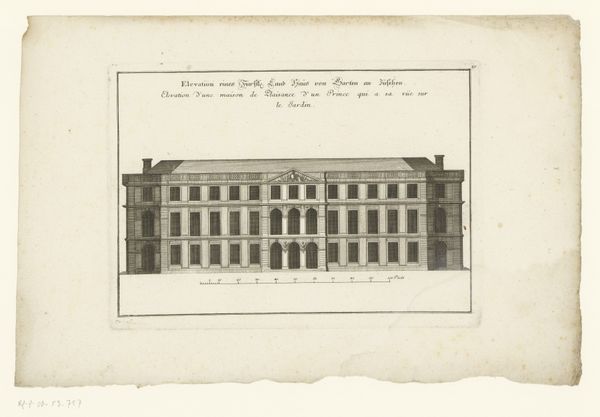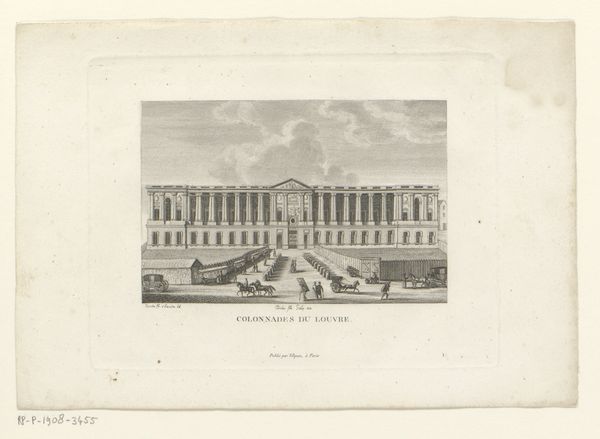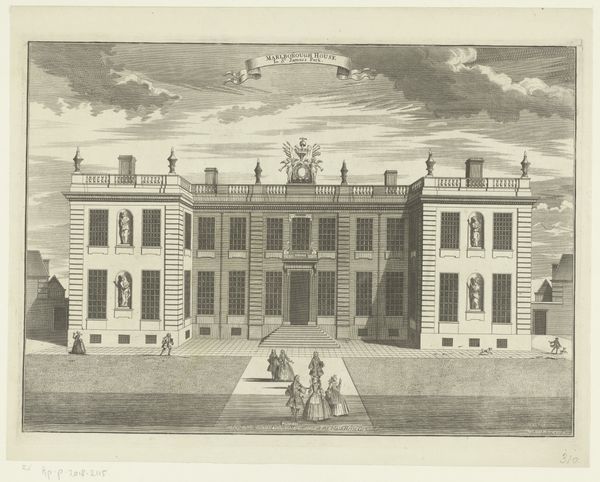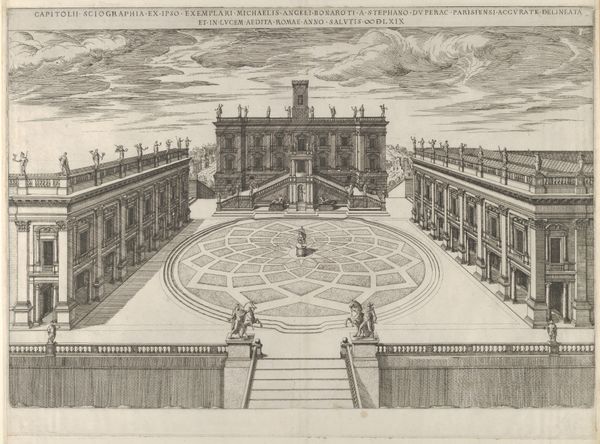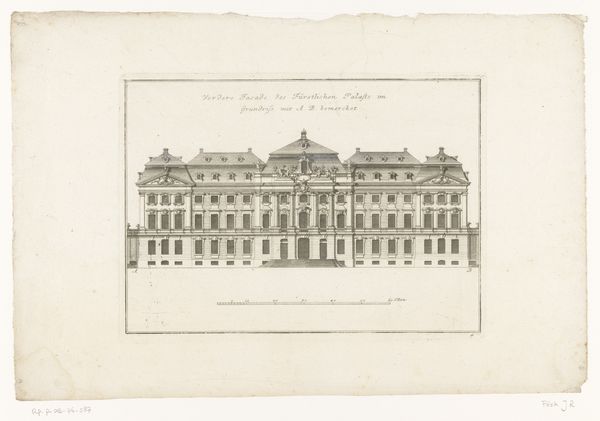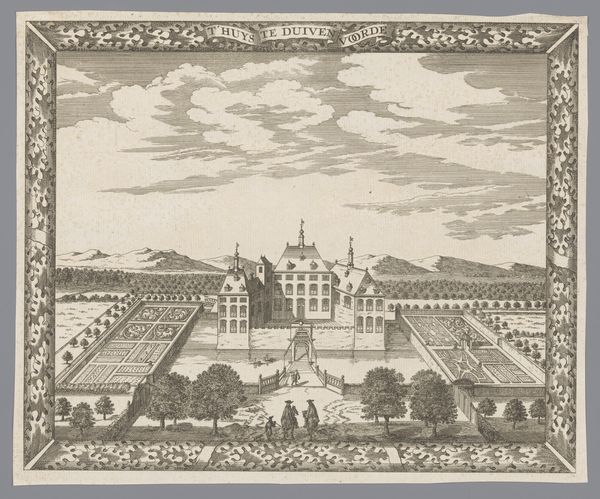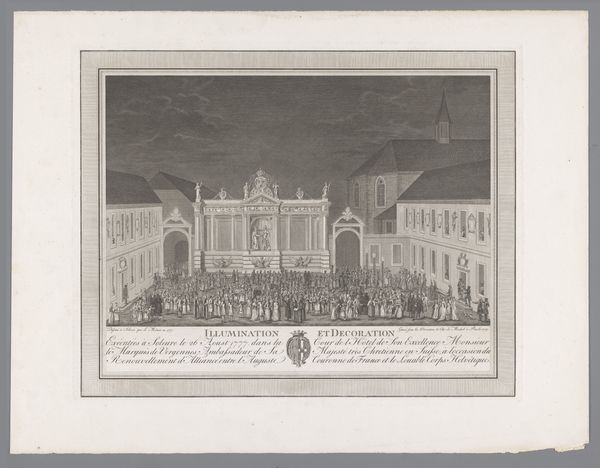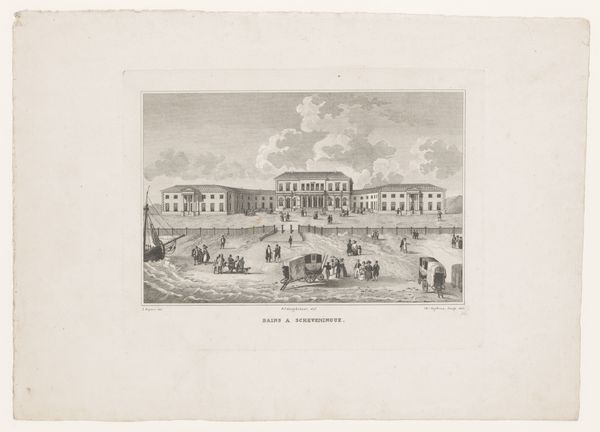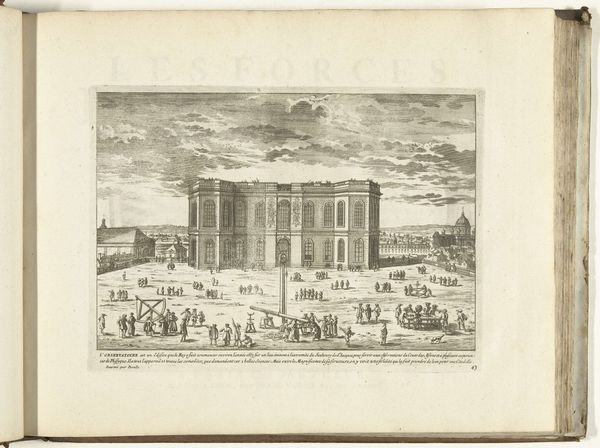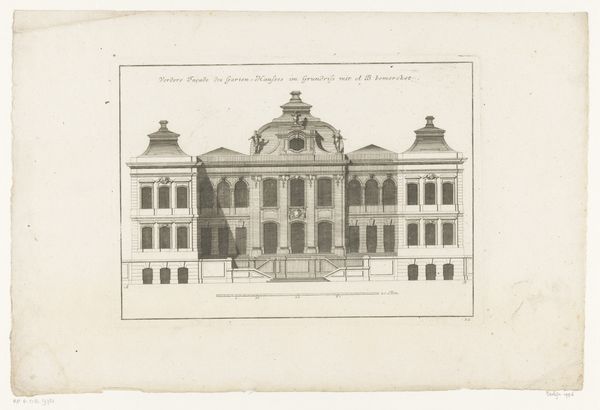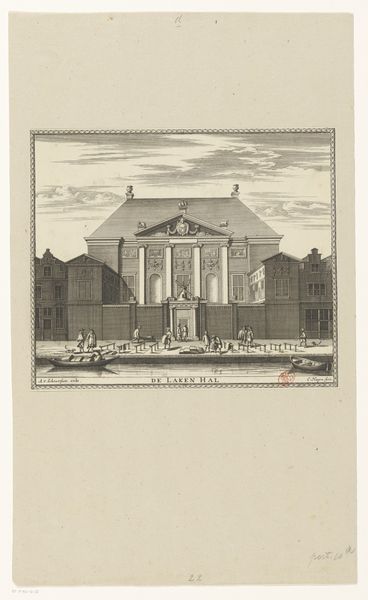
Stellage voor het vuurwerk te Londen voor de Vrede van Aken, 1749 1749
0:00
0:00
nicolaasvanfrankendaal
Rijksmuseum
print, engraving, architecture
#
baroque
# print
#
old engraving style
#
engraving
#
architecture
Dimensions: height 480 mm, width 547 mm
Copyright: Rijks Museum: Open Domain
Editor: Here we have “Stellage voor het vuurwerk te Londen voor de Vrede van Aken, 1749,” from Nicolaas van Frankendaal. It's an engraving that depicts architecture, maybe a stage or backdrop, created for a fireworks display. What strikes me is how much it resembles a theater set; what can you tell us about its cultural relevance? Curator: Indeed, it is fascinating how temporary celebratory structures become preserved as enduring images. Consider how this print functions within the social and political landscape of 18th-century Europe. This elaborate firework display, marking the Peace of Aachen, was commissioned by the British Crown. Ask yourself, what message was Britain trying to project through this ephemeral event? Editor: Hmm, stability? Power? A celebration of ending conflict? Curator: Precisely. And who was the intended audience, both at the event and through the circulation of prints like these? The event, naturally, targeted both the elite and common people of London to manufacture public sentiment, yet the engraving allowed that message of British power to circulate on the continent too. Editor: It’s interesting how a fleeting spectacle gets transformed into something more permanent, almost like propaganda distributed as art. Curator: Yes, it prompts us to consider the relationship between art, power, and public perception in a specific historical context, especially since prints like this one would've found their way into albums or scrapbooks. Editor: So it wasn't just a recording, but part of actively shaping the legacy of the event. Thanks for this insightful deep dive into what it meant for society! Curator: You're very welcome! It demonstrates how studying art history includes examining the interplay of artistic production and its impact on the public's socio-political views.
Comments
No comments
Be the first to comment and join the conversation on the ultimate creative platform.
